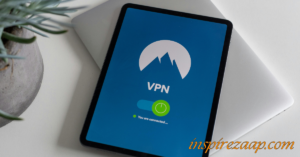The world of network security is constantly evolving as businesses strive to protect sensitive data, maintain compliance, and ensure uninterrupted access to resources. For organizations that rely on cloud-based networking solutions, the Cato Networks VPN Client has become a preferred choice. However, configuring the VPN Client Flux within Cato Networks correctly is essential to achieving optimal security and functionality. This article will cover the best practices for configuring Cato Networks VPN Client Flux, ensuring that your network remains secure and resilient.
What Is Cato Networks VPN Client Flux?
Before diving into best practices, it’s essential to understand what Cato Networks VPN Client Flux entails. Cato Networks offers a comprehensive Secure Access Service Edge (SASE) solution, integrating various security and networking functionalities into a single cloud-based platform. The VPN Client Flux is a component that manages traffic flow and security configurations between different network endpoints.

Flux configuration allows for dynamic adjustment of traffic routing and network policies, which enhances network efficiency and security. Properly configuring the VPN Client Flux is crucial because it directly impacts data privacy, user authentication, and network control.
Why Is Proper Configuration Important?
Incorrect or incomplete configuration of the VPN Client Flux can expose an organization to security vulnerabilities. Misconfigurations can result in unauthorized access, data leaks, and network downtime. By following best practices, organizations can avoid these risks and create a robust security posture that protects their network from potential threats.
Best Practices for Cato Networks VPN Client Flux Configuration
Here are some proven best practices to follow when configuring Cato Networks VPN Client Flux for optimal security:
1. Enable Multi-Factor Authentication (MFA)
One of the foundational steps in securing your VPN configuration is enabling Multi-Factor Authentication (MFA). MFA adds an extra layer of security by requiring users to verify their identities using more than just a password, such as a unique code sent to their phone. This reduces the risk of unauthorized access, especially if login credentials are compromised.
2. Segment Your Network with VLANs
Another effective strategy is to use Virtual Local Area Networks (VLANs) for segmenting traffic. VLANs create isolated network segments, which means that if a security breach occurs in one area, it won’t affect the entire network. This separation minimizes the risk of lateral movement by attackers, limiting the impact of any security incidents.
3. Define and Enforce Access Control Policies
Access control policies specify who can access certain parts of the network and what level of access they have. By configuring role-based access control within the VPN Client Flux, administrators can limit access to sensitive areas, ensuring that only authorized personnel have the ability to modify or interact with crucial systems. This practice is essential for minimizing the risk of internal threats.
4. Regularly Update Security Policies
Cato Networks frequently updates its platform to address new security vulnerabilities and enhance functionalities. Regularly reviewing and updating your VPN Client Flux security policies ensures you’re protected against the latest threats. Make it a priority to stay informed about Cato’s updates and implement necessary changes as soon as they are available.

5. Monitor Network Traffic Continuously
Continuous monitoring is essential for detecting and responding to potential security incidents in real-time. By enabling monitoring features within the Cato Networks platform, administrators can review traffic patterns, identify unusual behaviors, and respond to threats promptly. This approach minimizes downtime and ensures that threats are addressed before they escalate.
6. Implement Encryption for Data-in-Transit
Ensure that all data moving through the VPN is encrypted. Encryption for data-in-transit protects information from interception by encrypting it during transmission. Cato Networks supports industry-standard encryption protocols, which add a layer of security that’s particularly useful when handling sensitive information like financial records or personal data.
7. Review and Test Configurations Regularly
Regularly testing your VPN Client Flux configuration can help you identify potential weaknesses in the setup. By conducting periodic security audits and simulations, administrators can verify that configurations align with organizational policies and industry standards. Testing can prevent misconfigurations and ensure that the VPN Client Flux is optimized for both performance and security.
Common Mistakes to Avoid
- Not Using MFA: Relying solely on usernames and passwords leaves the network vulnerable to credential theft.
- Failing to Monitor Traffic: Without continuous monitoring, organizations may be unaware of suspicious activity until it’s too late.
- Neglecting Updates: Skipping updates can leave the network open to known vulnerabilities that are easily exploitable.
Conclusion
Cato Networks VPN Client Flux Configuration plays a crucial role in protecting an organization’s network by controlling traffic and enforcing security policies. By following these best practices—such as enabling MFA, segmenting networks, enforcing access control, and regularly updating configurations—administrators can safeguard their organization’s data and maintain a resilient network.
Ensuring a secure configuration is an ongoing process that requires regular reviews, updates, and testing. By adopting these practices, businesses can build a robust defense against cyber threats, ensuring their data remains secure and accessible only to authorized users.


